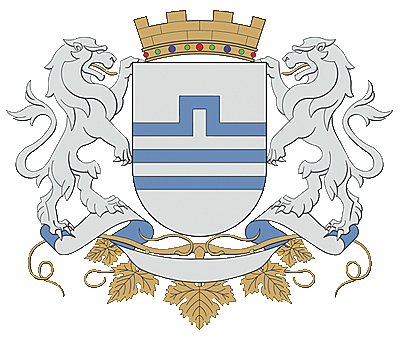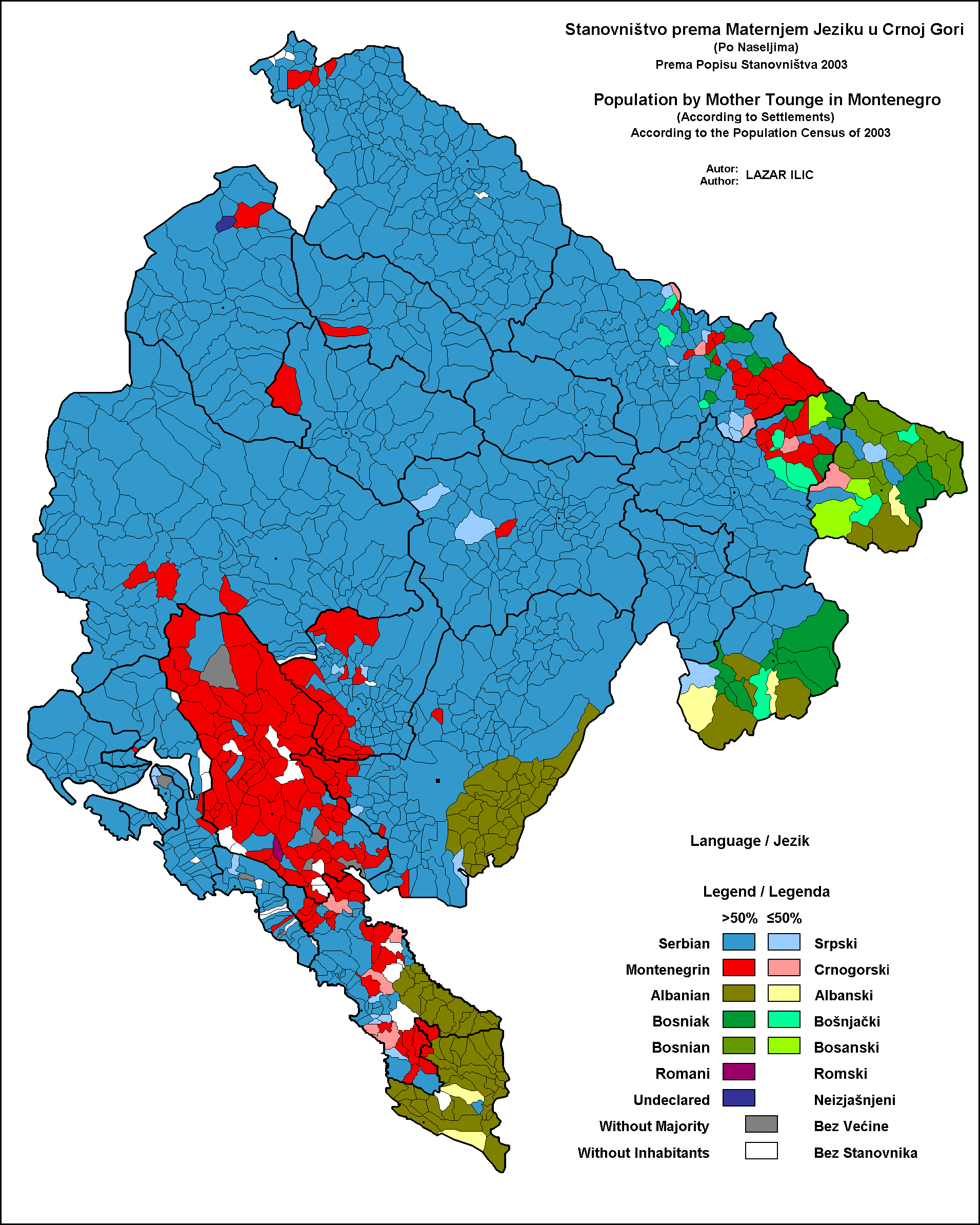|
Mojanovići
Mojanovići ( Montenegrin and Serbian: Мојановићи, ) is a village in the municipality of Podgorica, Montenegro. Demographics According to the 2003 census, the village has a population of 1,850 people. According to the 2011 census, its population was 2,593. Notable people * Žarko Knežević, retired basketball player. * Dejan Zlatičanin Dejan Zlatičanin (born 23 April 1984) is a Montenegrin professional boxer. He is the first Montenegrin to win a boxing world title, having held the WBC lightweight title from 2016 to 2017. Professional career Zlatičanin made his professional ..., professional boxer. References Populated places in Podgorica Municipality {{Montenegro-geo-stub ... [...More Info...] [...Related Items...] OR: [Wikipedia] [Google] [Baidu] |
Žarko Knežević
Žarko Knežević ( sr-cyr, Жарко Кнежевић; 17 July 1947 – 30 October 2020) was a Montenegrin basketball player who played at the Center Center or centre may refer to: Mathematics *Center (geometry), the middle of an object * Center (algebra), used in various contexts ** Center (group theory) ** Center (ring theory) * Graph center, the set of all vertices of minimum eccentrici ... position. Knežević was a member of the Yugoslav national team from 1971 to 1974. He played for Fenerbahçe at the 1978–79 season. References External links Žarko Kneževićat okkbeograd.org.rs Žarko Kneževićat pobjeda.me 1947 births 2020 deaths Basketball players at the 1972 Summer Olympics Fenerbahçe men's basketball players KK Budućnost players OKK Beograd players Olympic basketball players of Yugoslavia Power forwards (basketball) Montenegrin expatriate basketball people in Germany Montenegrin expatriate basketball people in Serbia Montenegrin expa ... [...More Info...] [...Related Items...] OR: [Wikipedia] [Google] [Baidu] |
List Of Sovereign States
The following is a list providing an overview of sovereign states around the world with information on their status and recognition of their sovereignty. The 206 listed states can be divided into three categories based on membership within the United Nations System: 193 UN member states, 2 UN General Assembly non-member observer states, and 11 other states. The ''sovereignty dispute'' column indicates states having undisputed sovereignty (188 states, of which there are 187 UN member states and 1 UN General Assembly non-member observer state), states having disputed sovereignty (16 states, of which there are 6 UN member states, 1 UN General Assembly non-member observer state, and 9 de facto states), and states having a special political status (2 states, both in free association with New Zealand). Compiling a list such as this can be a complicated and controversial process, as there is no definition that is binding on all the members of the community of nations concerni ... [...More Info...] [...Related Items...] OR: [Wikipedia] [Google] [Baidu] |
Municipalities Of Montenegro
The ''municipalities'' (Serbian language, Serbian: ''opštine'' / општине, singular: ''opština'' / општина) are the first level administrative subdivisions of Montenegro. The country is divided into 25 municipalities including the Old Royal Capital Cetinje and the Podgorica Capital City. Podgorica is divided into one subdivision called ''city municipality'' (Montenegrin: ''gradska opština'' / градска општина, plural: ''gradske opštine'' / градске општине), forming the most basic level of local government. Recently created: *Petnjica Municipality (2013) *Gusinje Municipality (2014) *Tuzi Municipality (2018) *Zeta Municipality (2022) ** The ''Union of Municipalities of Montenegro'' is a national association of local authorities of Montenegro. List Politics List of current mayors and local governments (6) (5) (3) (3) (2) (1) (1) (1) (1) (1) (1) Local parliaments of Montenegro See also *List of regions of Montenegro ... [...More Info...] [...Related Items...] OR: [Wikipedia] [Google] [Baidu] |
Podgorica Coat Of Arms
Podgorica (Cyrillic: Подгорица, ; lit. 'under the hill') is the capital and largest city of Montenegro. The city was formerly known as Titograd (Cyrillic: Титоград, ) between 1946 and 1992—in the period that Montenegro formed, as the Socialist Republic of Montenegro in honour of Marshal Josip Broz Tito. The city was largely destroyed during the bombing of Podgorica in World War II and accordingly the city is now dominated by architecture from the following decades of communism. Further but less substantial damage was caused by the 1999 bombing by NATO forces. The surrounding landscape is predominantly mountainous terrain. The city is just north of the Lake Skadar and close to coastal destinations on the Adriatic Sea. Historically, it was Podgorica's position at the confluence of the Ribnica and Morača rivers and at the meeting-point of the fertile Zeta Plain and Bjelopavlići Valley that encouraged settlement. Etymology Podgorica is written in Cyrillic a ... [...More Info...] [...Related Items...] OR: [Wikipedia] [Google] [Baidu] |
Podgorica Capital City
Podgorica Capital City (Montenegrin language, Montenegrin: Glavni grad Podgorica / Главни град Подгорица) is one of the municipalities of Montenegro, territorial subdivisions of Montenegro. The seat of Municipalities of Montenegro, municipality is the city of Podgorica. Podgorica municipality covers 10.4% of Montenegro's territory and is home to 29.9% of the country's population. It is the nation's administrative centre and its economic and educational focus. Administration As with other Montenegrin municipalities, the city and the municipality of Podgorica are governed by the same Mayor and City Assembly, which together act as a Capital City government. The city assembly has 60 members, elected directly for four-year terms. The Mayor of Podgorica is the head of the City of Podgorica, acts on behalf of the city, and performs an executive function in the Podgorica Capital City municipality. City Assembly composition City Assembly Subdivisions Municipality ... [...More Info...] [...Related Items...] OR: [Wikipedia] [Google] [Baidu] |
Central European Time
Central European Time (CET) is a standard time which is 1 hour ahead of Coordinated Universal Time (UTC). The time offset from UTC can be written as UTC+01:00. It is used in most parts of Europe and in a few North African countries. CET is also known as Middle European Time (MET, German: MEZ) and by colloquial names such as Amsterdam Time, Berlin Time, Brussels Time, Madrid Time, Paris Time, Rome Time, Warsaw Time or even Romance Standard Time (RST). The 15th meridian east is the central axis for UTC+01:00 in the world system of time zones. As of 2011, all member states of the European Union observe summer time (daylight saving time), from the last Sunday in March to the last Sunday in October. States within the CET area switch to Central European Summer Time (CEST, UTC+02:00) for the summer. In Africa, UTC+01:00 is called West Africa Time (WAT), where it is used by several countries, year round. Algeria, Morocco, and Tunisia also refer to it as ''Central European ... [...More Info...] [...Related Items...] OR: [Wikipedia] [Google] [Baidu] |
Central European Summer Time
Central European Summer Time (CEST), sometimes referred to as Central European Daylight Time (CEDT), is the standard clock time observed during the period of summer daylight-saving in those European countries which observe Central European Time (CET; UTC+01:00) during the other part of the year. It corresponds to UTC+02:00, which makes it the same as Eastern European Time, Central Africa Time, South African Standard Time, Egypt Standard Time and Kaliningrad Time in Russia. Names Other names which have been applied to Central European Summer Time are Middle European Summer Time (MEST), Central European Daylight Saving Time (CEDT), and Bravo Time (after the second letter of the NATO phonetic alphabet). Period of observation Since 1996, European Summer Time has been observed between 01:00 UTC (02:00 CET and 03:00 CEST) on the last Sunday of March, and 01:00 UTC on the last Sunday of October; previously the rules were not uniform across the European Union. There were proposals ... [...More Info...] [...Related Items...] OR: [Wikipedia] [Google] [Baidu] |
Montenegrin Language
Montenegrin ( ; cnr, label=none, / ) is a normative variety of the Serbo-Croatian language mainly used by Montenegrins and is the official language of Montenegro. Montenegrin is based on the most widespread dialect of Serbo-Croatian, Shtokavian, more specifically on Eastern Herzegovinian, which is also the basis of Standard Croatian, Serbian, and Bosnian. Montenegro's language has historically and traditionally been called either Serbian or Montenegrin. The idea of a standardized Montenegrin standard language separate from Serbian appeared in the 1990s during the breakup of Yugoslavia, through proponents of Montenegrin independence from the State Union of Serbia and Montenegro. Montenegrin became the official language of Montenegro with the ratification of a new constitution on 22 October 2007. Language standardization In January 2008, the government of Montenegro formed the Board (Council) for Standardization of the Montenegrin Language, which aims to standardize the ... [...More Info...] [...Related Items...] OR: [Wikipedia] [Google] [Baidu] |
Serbian Language
Serbian (, ) is the standardized variety of the Serbo-Croatian language mainly used by Serbs. It is the official and national language of Serbia, one of the three official languages of Bosnia and Herzegovina and co-official in Montenegro and Kosovo. It is a recognized minority language in Croatia, North Macedonia, Romania, Hungary, Slovakia, and the Czech Republic. Standard Serbian is based on the most widespread dialect of Serbo-Croatian, Shtokavian (more specifically on the dialects of Šumadija-Vojvodina and Eastern Herzegovina), which is also the basis of standard Croatian, Bosnian, and Montenegrin varieties and therefore the Declaration on the Common Language of Croats, Bosniaks, Serbs, and Montenegrins was issued in 2017. The other dialect spoken by Serbs is Torlakian in southeastern Serbia, which is transitional to Macedonian and Bulgarian. Serbian is practically the only European standard language whose speakers are fully functionally digraphic, using both Cyril ... [...More Info...] [...Related Items...] OR: [Wikipedia] [Google] [Baidu] |
Montenegro
) , image_map = Europe-Montenegro.svg , map_caption = , image_map2 = , capital = Podgorica , coordinates = , largest_city = capital , official_languages = Montenegrin , languages2_type = Languages in official use , languages2 = , ethnic_groups = , ethnic_groups_year = 2011 , religion = , religion_year = 2011 , demonym = Montenegrin , government_type = Unitary parliamentary republic , leader_title1 = President , leader_name1 = Milo Đukanović , leader_title2 = Prime Minister , leader_name2 = Dritan Abazović (acting) , leader_title3 = Speaker , leader_name3 = Danijela Đurović , legislature = Skupština , sovereignty_type = Establishment history , established_event1 = Principality of Duklja , established_date1 ... [...More Info...] [...Related Items...] OR: [Wikipedia] [Google] [Baidu] |
Statistical Office Of Montenegro
Statistical Office of Montenegro ( cnr, Uprava za statistiku Crne Gore) or MONSTAT is the statistics agency of Montenegro. It provides information service and indicators for monitoring the economic and social development of Montenegro, and regularly publishes publications compiling figures about the country. References External links * Montenegro ) , image_map = Europe-Montenegro.svg , map_caption = , image_map2 = , capital = Podgorica , coordinates = , largest_city = capital , official_languages = M ... Demographics of Montenegro Government of Montenegro {{org-stub ... [...More Info...] [...Related Items...] OR: [Wikipedia] [Google] [Baidu] |
Montenegrins (ethnic Group)
Montenegrins ( cnr, Црногорци, Crnogorci, or ; lit. "Black Mountain People") are a South Slavic ethnic group that share a common Montenegrin culture, history, and language, identified with the country of Montenegro. Genetics According to one triple analysis – autosomal, mitochondrial and paternal — of available data from large-scale studies on Balto-Slavs and their proximal populations, the whole genome SNP data situates Montenegrins with Serbs in between two Balkan clusters. According to a 2020 autosomal marker analysis, Montenegrins are situated in-between Serbians and Kosovo Albanians. Y-DNA genetic study done in 2010 on 404 male individuals from Montenegro gave the following results: haplogroup I2a (29.7%), E-V13 (26.9%), R1b (9.4%), R1a (7.6%), I1 (6.1%), J2a1 (4.7%), J2b (4.4%), G2a (2.4%), Q (1.9%), I2b (1.7%), N (1.4%), H (1.4%), L (1.2%), and J1 (0.49%). A 2022 study on 267 samples from northeastern Montenegro found that the "most common hapl ... [...More Info...] [...Related Items...] OR: [Wikipedia] [Google] [Baidu] |





